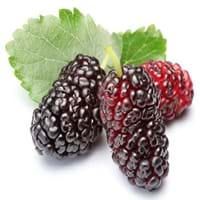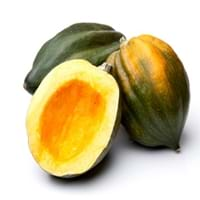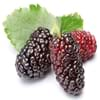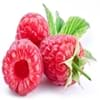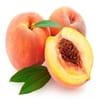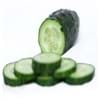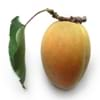Health Benefits
Anti-aging benefits, Boosts immune system, Cancer prevention, Flu treatment, Hair care, Heart care, Improves eye vision, Increases metabolic rate, Kidney stone treatment, Maintains healthy cholesterol level, Skin cleansing, Skin rejuvenation, Treatment of common cold, Treatment of skin Diseases
Anti-inflammatory properties, Arthritis treatment, Regulates Blood Sugar
General Benefits
Boosts immune system, Controls blood sugar levels, Flu treatment, Improves eye vision, Maintains healthy cholesterol level, Treatment of common cold
Boosts immune system, Controls blood sugar levels, Digestive aid
Skin Benefits
Anti-aging benefits, Skin cleansing, Treatment of skin diseases
Nourishes skin, Protects skin from oxidative stress
Hair Benefits
Protects hair, Regulates hair growth
Prevents hair loss, Promotes longer and healthier hair, Regulates hair growth
Allergy Symptoms
Breathing difficulty, Itching, Nasal congestion, Redness of eyes, Runny nose, Sneezing
Asthma, Red rash, Swelling of mouth, tongue or lips
Side Effects
Decrease in blood sugar levels, Allergic reaction
Diarrhoea, Vomiting
Best Time to Eat
Best if taken as a breakfast (or empty stomach), As a snack in the late afternoon, Don't consume at night and before bed, Eat the fresh ones, avoid mixing with any other foods, don't eat after meal., Morning time (before lunch)
Along with meal, As a snack in the late afternoon, Don't eat after meal, Eat the fresh ones, avoid mixing with any other foods, don't eat after meal.
Vitamin B5 (Pantothenic Acid)
Not Available
Vitamin C (Ascorbic Acid)
Vitamin E (Tocopherole)
Not Available
Vitamin K (Phyllochinone)
Not Available
Lutein+Zeaxanthin
Not Available
Calories in Fresh Fruit with Peel
Calories in Fresh Fruit without Peel
Not Available
Not Available
Calories in Canned Form
Not Available
Season
Spring, Summer
Winter
Varieties
Charparral, Pendula, Teas, Bellaire and Lingan
Bush Table Queen, Heirloom Table Queen, Festival Hybrid, Early Acorn Hybrid, Table Ace, Ebony and Cream of the Crop
Color
Pink, Purple, White
Dark green, Green-yellow, Orange green
Origin
China
Central America, North America, Unknown
Soil Type
Clay, Loam
Well-drained
Climatic Conditions
Sunny
Cold, Sunny
Facts about
- It can take up to 10 years for a tree to produce mulberry fruit.
- Mulberry leaves are fed to silkworms to enhance silk production.
- In Germany, they say that devil uses root of mulberry tree to polish his boots.
- It was named as Acorn Squash for its resemblance to a large ribbed acorn.
- It is said that squash was being grown in Mexico as long as 10,000 years ago.
- It was the first food cultivated by native American Indians.
Other Countries
Colombia, Egypt, India, Indonesia, Kenya, Mexico, Pakistan, Peru, Russia, United States of America
Egypt, India, Iran, Italy, Mexico, Russia, Turkey, Ukraine, United States of America
Top Importer
Not Available
Costa Rica
Top Exporter
China
United States of America
Botanical Name
Morus Alba
Cucurbita Pepo
Synonym
Morus atropurpurea or Morus multicaulis
Winter Squash
Subkingdom
Tracheobionta
Tracheobionta
Division
Magnoliophyta
Magnoliophyta
Class
Magnoliopsida
Magnoliopsida
Subclass
Alismidae
Dillenhidae
Order
Rosales
Cucurbitales
Family
Moraceae
Cucurbitaceae
Generic Group
Mulberry
Not Available
Difference Between Mulberry and Acorn squash
We might think that Mulberry and Acorn squash are similar with respect to nutritional value and health benefits. But the nutrient content of both fruits is different. Mulberry and Acorn squash Facts such as their taste, shape, color, and size are also distinct. The difference between Mulberry and Acorn squash is explained here.
The amount of calories in 100 gm of fresh Mulberry and Acorn squash with peel is 43.00 kcal and 40.00 kcal and the amount of calories without peel is Not Available and Not Available respectively. Thus, Mulberry and Acorn squash belong to Low Calorie Fruits and Low Calorie Fruits category.These fruits might or might not differ with respect to their scientific classification. The order of Mulberry and Acorn squash is Rosales and Cucurbitales respectively. Mulberry belongs to Moraceae family and Acorn squash belongs to Cucurbitaceae family. Mulberry belongs to Morus genus of M. alba species and Acorn squash belongs to Cucurbita genus of Pepo species. Beings plants, both fruits belong to Plantae Kingdom.
